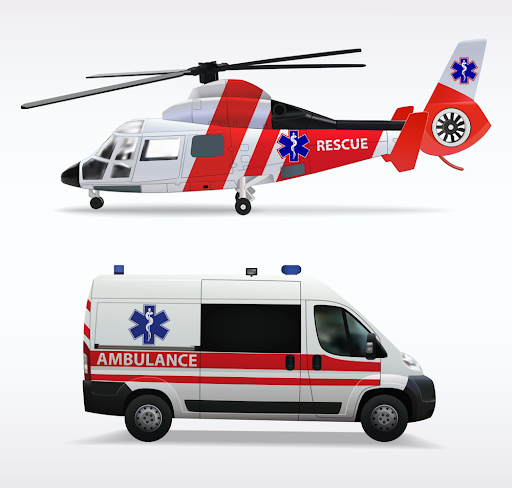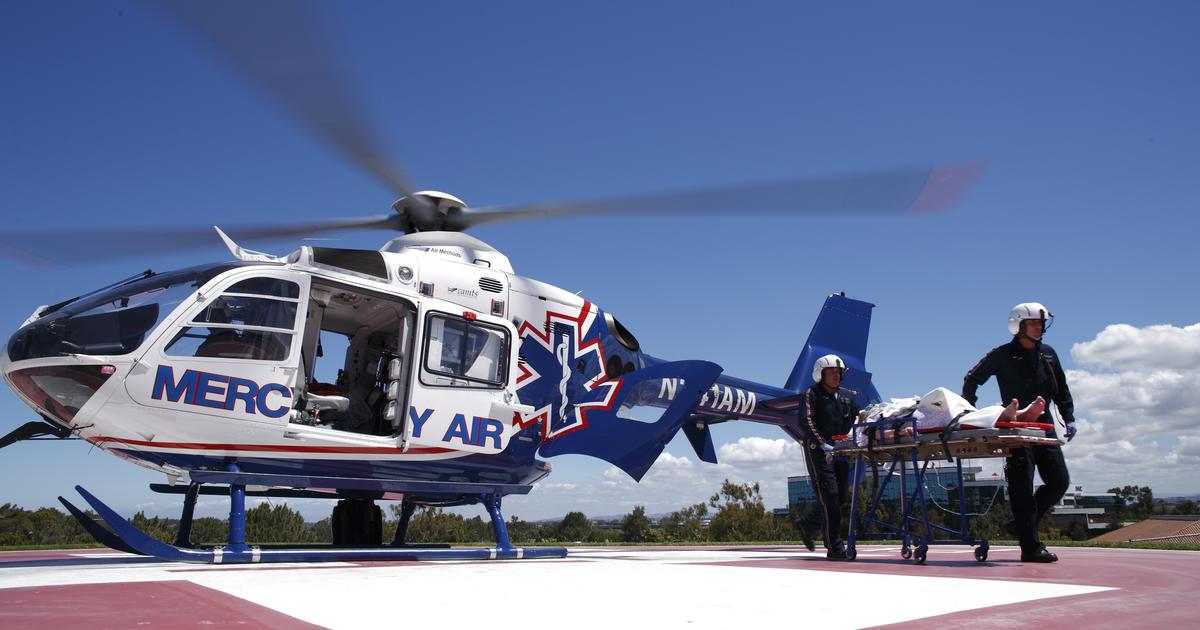Ever wondered why air ambulance services are significantly more expensive than ground ambulance services? Well, you’re in the right place! In this article, we are going to compare the costs of air ambulances and ground ambulances, giving you a better understanding of why there’s such a stark difference in pricing. Whether you’ve been curious about why air ambulance costs are so high or are simply looking for information to make an informed decision, we’ve got you covered. So, let’s buckle up and delve into the world of air vs. ground ambulance costs!

Factors Affecting Air Ambulance Costs
When it comes to air ambulance costs, there are several factors that can influence the final price. These factors include the medical equipment required, the crew and staff needed, the type of aircraft used, the distance traveled, the fuel and maintenance expenses, as well as any specialized training and certifications necessary.
Medical Equipment
One of the key factors affecting air ambulance costs is the medical equipment needed during the transport. Air ambulances are equipped with advanced medical devices such as ventilators, cardiac monitors, defibrillators, and specialized medical kits. The cost of procuring, maintaining, and updating this equipment contributes significantly to the overall expense of air ambulance services.
Crew and Staff
Another crucial component in determining air ambulance costs is the crew and staff required for the transport. Air ambulances typically have a highly skilled medical team on board, including doctors, nurses, paramedics, and respiratory therapists. The number and expertise of these professionals can vary depending on the patient’s condition and the complexity of the medical care needed.
Aircraft Type
The type of aircraft used for the air ambulance service also plays a role in determining the cost. Air ambulances can utilize helicopters, turboprop aircraft, or jets, depending on the distance to be traveled and the medical requirements of the patient. Each type of aircraft has different operational costs, maintenance expenses, and capabilities, which in turn affect the overall pricing of air ambulance services.
Distance Traveled
The distance traveled is a significant factor that impacts air ambulance costs. Longer distances may require more fuel, potentially necessitating refueling stops and increasing overall travel time. Additionally, transporting a patient over a longer distance may require a larger, more capable aircraft, which can also contribute to higher costs.
Fuel and Maintenance
Just like any other mode of transportation, fuel and maintenance costs are key factors affecting air ambulance expenses. Air ambulances consume a significant amount of fuel during flights, especially during long-distance transfers. Furthermore, these aircraft require regular maintenance and inspections to ensure they remain in optimal condition, driving up operational costs.
Specialized Training and Certifications
The extensive training and certifications held by the medical and flight crews aboard air ambulances add another layer of cost to the overall pricing. These professionals undergo specialized training to effectively handle challenging medical situations in flight. The cost of maintaining and updating their training, qualifications, and certifications contributes to the higher price of air ambulance services.
Factors Affecting Ground Ambulance Costs
Ground ambulance costs encompass various factors that differ from those of air ambulance services. Understanding these factors is essential to comprehend the pricing differences between the two modes of transportation.
Type of Ambulance
The type of ambulance used for ground transportation is a significant determinant of the overall cost. Ground ambulances can range from basic life support (BLS) units to advanced life support (ALS) or critical care transport (CCT) vehicles. Each type of ambulance has different capabilities, equipment, and staffing requirements, leading to variations in pricing.
Emergency Services Provided
The range of emergency medical services provided during ground transportation also affects the cost. Some ground ambulances may only offer basic medical assistance, while others are equipped to provide advanced life support, including administering medications, performing advanced procedures, and maintaining critical care interventions. The level of care required by the patient influences the overall pricing.
Distance Traveled
As with air ambulances, the distance traveled is a significant factor influencing ground ambulance costs. Longer distances typically result in higher costs due to the increased time and resources required for the transport. Ground ambulances also have limitations in terms of the distance they can cover efficiently, which can further impact the pricing structure.
Medical Equipment
Ground ambulances carry a variety of medical equipment to stabilize patients during transportation. The type and quantity of equipment required depend on the patient’s condition and the level of care needed. The cost of acquiring, maintaining, and replenishing this medical equipment contributes to the overall expense of ground ambulance services.
Crew and Staff
Ground ambulances require well-trained personnel to care for patients during transit. These can include emergency medical technicians (EMTs) or paramedics, who provide vital medical assistance. The number and level of expertise of the crew members vary depending on the severity of the patient’s condition and the type of ambulance being used.
Fuel and Maintenance
While not as prominent as in air ambulances, fuel and maintenance costs are also factors affecting ground ambulance pricing. Ground ambulances consume fuel during transportation, and regular maintenance is necessary to keep them in optimal condition. These expenses, though comparatively lower than those of air ambulances, still contribute to the overall cost.
Cost Comparison: Air Ambulance vs Ground Ambulance
Now let’s compare the overall costs of air ambulance and ground ambulance services. While both modes of transportation serve the purpose of medical transport, their pricing structures differ significantly.
Overall Cost
When it comes to the overall cost, air ambulance services tend to be more expensive than ground ambulance services. The combination of factors such as specialized medical equipment, highly skilled medical and flight crews, aircraft maintenance, and fuel expenses drive up the price of air ambulance services.
On the other hand, ground ambulance services are generally more affordable due to their lower operational costs. Ground ambulances have fewer equipment requirements, lower fuel consumption, and a smaller staff, which lead to reduced overall expenses.
Average Cost per Mile
Looking at the average cost per mile, air ambulances are typically costlier than their ground counterparts. The need for larger aircraft capable of flying long distances, higher fuel consumption, and more extensive medical equipment contribute to the increased expense per mile for air ambulance services.
Ground ambulance services, primarily utilized for shorter distances, have lower average costs per mile. The smaller vehicles and reduced fuel consumption make ground transportation more cost-effective for shorter trips.
Insurance Coverage
Insurance coverage plays a crucial role in determining the out-of-pocket expenses for ambulance services. While specific insurance plans may cover both air and ground ambulance services, coverage may vary between providers and policies. It is essential to check with your insurance provider to understand the extent of coverage for each mode of transportation.
Additional Expenses
In addition to the core factors discussed above, both air and ground ambulance services may incur additional expenses. These expenses can include factors such as extra waiting time, additional medical equipment or medication, tolls, or permits for air ambulance services. Consideration of these potential additional costs is necessary when comparing the overall expenses between air and ground ambulance services.
Medical Equipment
Air and ground ambulances carry essential medical equipment to ensure patients receive the necessary care during transportation. While there are similarities in the equipment used, each mode of transport has specific considerations.
Air Ambulance Equipment
Air ambulances are equipped with advanced life support equipment to address critical medical needs during flight. This can include ventilators, cardiac monitors, defibrillators, infusion pumps, and specialized medical kits. The presence of this equipment ensures that patients can receive continuous medical care while being transported through the air.
Ground Ambulance Equipment
Ground ambulances also carry medical equipment to stabilize patients en route to medical facilities. This equipment can include basic life support supplies such as oxygen, bandages, splints, and stretchers. Advanced life support ground ambulances may also carry additional equipment like ECG monitors, airway management devices, and medications.
Crew and Staff
Both air and ground ambulances require a dedicated team of professionals to deliver quality medical care. The composition of the medical and flight crews differs between air and ground transportation.



